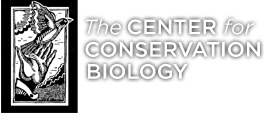Objectives:
The purpose of this project is to generate population estimates for the colonial waterbird species nesting in the Coastal Plain of Virginia. The survey includes the 24 species known to nest in Virginia. Great Blue Herons and Great Egrets are widely distributed throughout the coastal plain and occupy many nesting sites. Information compiled for available species is intended to (1) be integrated into biological databases to be used in the environmental review process, (2) provide information for comparison to past and future surveys for the purpose of assessing longterm population trends, and (3) be used in the formulation of management recommendations.
[easy_image_gallery]
Project Description:
In Virginia, colonial waterbirds include herons, egrets, ibises, gulls, terns, skimmers, cormorants, and pelicans. These birds share the unusual characteristic of nesting in dense assemblages. The result of this behavior is that they typically breed in very few locations such that the loss of a few breeding areas may have profound consequences on a population level. Due to their position in the aquatic food web, they are considered to be good indicators of ecosystem health. The most significant threats to colonial waterbirds include human disturbance, predation, habitat loss, and contaminants. Protection of sensitive colonies clearly depends on the availability of timely locational information. Development of strategic management plans to protect these species and breeding areas requires a broader understanding of population trends.
Extensive aerial surveys are conducted using fixed-wing aircraft during early stages of the breeding season. All barrier islands, Bay islands, and marshlands were overflown and searched for colonies of colonial waterbirds. Aerial surveys for all other colonial nesters were conducted by systematically flying over areas at an altitude of approximately 100-150 m and searching for evidence
of breeding colonies.
Follow-up ground counts were conducted for all locations except extensive gull colonies within seaside and bay island marshes. These colonies are often in remote locations and are difficult to survey on the ground due to their aerial extent. It is more cost effective and logistically efficient to survey these colonies from the air.
Years: 1975 – present
Status: Ongoing
Project Partners: Virginia Department of Game & Inland Fisheries, the Coastal Program of the Department of Environmental Quality, the Virginia Coast Reserve of The Nature Conservancy, the U.S. Fish and Wildlife Service, and the Natural Heritage Program of the Virginia Department of Conservation and Recreation
CCB Staff: Bill Williams, Mitchell Byrd, Bryan Watts, Bart Paxton
Project Contact: Bryan Watts bdwatt@wm.edu (757) 221-2247
Publications:
Watts, B. D., B. J. Paxton. 2009. Status and distribution of colonial waterbirds in coastal Virginia: 2008 breeding season. CCBTR-09-03. Center for Conservation Biology Technical Report Series. College of William and Mary, Williamsburg, VA. 21 pp.
Watts, B. D. and M. A. Byrd. 2006. Status and distribution of colonial waterbirds in coastal Virginia: The 2003 breeding season. The Raven 77:3-22.
Data:
View 2013 colonial waterbird data in the CCB Mapping Portal.
View 2008 colonial waterbird data in the CCB Mapping Portal.
View 2003 colonial waterbird data in the CCB Mapping Portal.
More Information:
